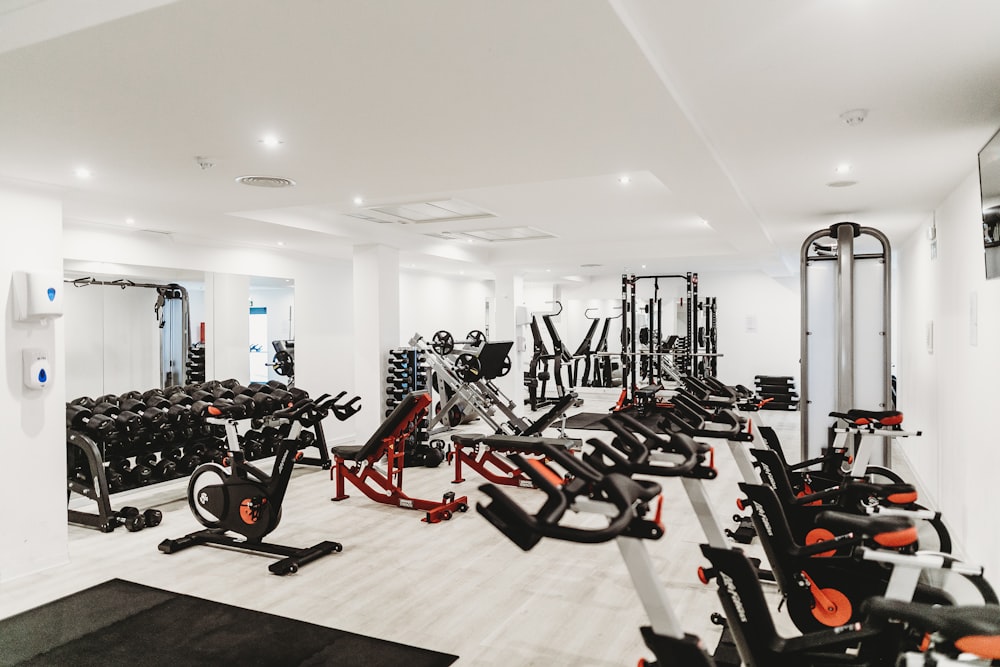
If you’re wondering why it’s important to learn how to protect your joints while exercising, you first have to understand the importance of healthy joints. Your ankles, shoulders, knees and hips, for example, keep you moving and allow you to perform all kinds of activities. Healthy joints allow you to run and play sports, as well as perform daily tasks such as putting on your shoes, getting dressed, or carrying your groceries home.
Debilitating joint diseases such as osteoarthritis, which affects millions of people around the world, inhibit the ability of those who suffer from it to perform such activities. We need healthy joints to be healthy, mobile human beings.
Diseases of the Joints
Arthritis in all forms affects approximately 1 in 4 women and 1 in 6 men, and that number is expected to rise. By 2040, The Arthritis Society estimates that 50% more of the population will have arthritis or 1 out of 4 people.
Arthritic joints become sore, stiff and swollen. Arthritis can make simple tasks such as dressing or cooking a painful chore. There is no cure for arthritis, but it can be treated with anti-inflammatory medication that can make the symptoms easier to deal with.
There is no single cause for arthritis, although a number of factors can contribute to its development and progression including immune system dysfunction, genes and injury.
Does Strength Training Promote Joint Health?
There seems to be a common misconception that weightlifting and strength training can contribute to joint degeneration and conditions such as arthritis. However, building strong muscles by weightlifting and strength training is a great way to support your long-term joint health. It’s even been suggested that lifting weights can ease some symptoms of arthritis.
That being said, injuries that happen as a result of weightlifting can play a part in developing degenerative arthritis down the line, so it’s important to approach weightlifting and strength training exercises with a degree of caution.
If you’re incorporating regular strength training as part of your fitness routine, read on to find out how you can protect yourself from long-term joint damage.

Which Joints are Most at Risk During Strength Training at the Gym?
Weightlifting does, in fact, put some strain on your joints. Some joints are more susceptible to damage than others. Unsurprisingly, the three most common areas at risk for injury due to strength training are the shoulders, knees, and spine. If you’ve ever pulled a muscle in any of these areas, you already know how debilitating even a minor injury can be.
Your body is one machine, and all of its parts are connected and work together. Have you ever had knee pain and hip pain at the same time? One might have contributed to the other. Injury or weakness in a major weight-bearing joint is going to affect the way you stand, walk and carry things, and that can wear on weaker, smaller joints and lead to injury or overuse there. If the weight-bearing joint can’t do the work it needs to do because it’s been injured, weaker joints will do work they’re not meant to do.
Likewise, overworking major joints can cause degeneration as well, like doing heavy sets of squats five times a week. This is why it’s important to change up your workout routine every 4-6 weeks and to make sure you’re hitting all your muscle groups. A lot of people have areas they want to target (like butt and thighs) but overworking them and ignoring the other muscle groups won’t make you see progress any faster and is likely to result in chronic pain.
For example, if you’re working out your shoulders and arms but neglecting your chest, over time this will lead to poor posture and imbalances in your musculature structure, which can increase your risk of injury both in and out of the gym.
What’s the Deal With Weightlifting and Associated Pain?
Chances are you know at least one person who’s perpetually sore from their last gym session. It might seem like weightlifting directly contributes to pain and discomfort.
However, weightlifting and joint pain don’t necessarily go hand in hand; lifting can be safe and joint-friendly when done correctly.
The roots of joint pain boil down to two main causes:
1. Trying to lift too much weight, and/or
2. Improper form.
A lot of people mistakenly think that progress is solely measured by increasing the weight they’re lifting. But you can’t progress if you’re frequently needing to take time off from the gym because you threw your back out trying to deadlift more weight than you’re capable of. You’re constantly going to be starting back at square one.
Instead of increasing the weight, try for more repetitions. Once you can easily perform the maximum number of reps, then you can gradually increase your weight. Remember that each time you add more weight, you should reduce your repetitions.
If you’re new to weightlifting, consider hiring a trainer for the first month or so. A lot of gyms will even offer a few sessions free of charge to new members. These trained professionals understand that every body is different, and they can help you learn the correct lifting form for your unique build.
How To Protect Your Joints and Avoid Injuries from Weightlifting
We already know that lifting within your capabilities and practising good form are the two best ways to prevent an injury, but there are a few other steps that are easy to implement before, during and after your workout that can protect your joints even further.
Before you work out, a good warm-up and stretching routine should be completed, in that order. Warming up before you stretch will save you the pain of pulling or tearing a muscle; have you ever tried to bend a piece of cold plastic? Your muscles work the same way. Before they can be stretched, they need to be activated and warmed up. Start off with simple movements such as cat-cows, arm and leg swings, clam-shells or any other simple movement to get the blood flowing. Afterwards, you can safely move on to static stretches.
During your workout, listen closely to what your body is telling you. Exercise should be strenuous, but it shouldn’t hurt. If you’re experiencing pain during a certain movement, stop immediately and consult a doctor or fitness professional before trying again.
Avoid complex movements unless directed and supervised by your trainer or experienced spotter. Don’t be afraid to ask a fellow gym-goer to spot you.
Focus on creating a mind-to-muscle connection; it’s not how much you lift, but how youlift. Three repetitions performed correctly is better than ten reps done with the wrong form. Concentrate on firing the right muscles to perform the movement (eg. lifting with your legs instead of your back). This requires focus, as you must focus on the muscles you want to use so that you don’t end up using the wrong body parts to perform the exercise.
Remember that not every workout needs to leave you exhausted and panting. Rest when you’re tired or try a less demanding routine.
After your workout, feed your body what it needs. Strength training at the gym does cause joint inflammation, so eating foods with anti-inflammatory properties such as turmeric, olive oil and fatty fish may reduce your post-workout soreness. Stretching and foam rolling after a workout will help break up the lactic acid that builds up and contributes to muscle soreness the next day.

Can Strength Training Prevent Arthritis?
A common misconception is that heavy weightlifting can eventually lead to joint degeneration and further exacerbate conditions like arthritis. But according to recent research, long-term strength training can actually prolong the life of our joints, keeping them well lubricated. And weightlifting was actually shown to alleviate symptoms like pain and stiffness in the elderly living with osteoarthritis.
The American College of Sports Medicine is even recommending weightlifting to anyone over 50 years old.
Low Impact Exercises to Keep You Moving When You’re Hurt
Sometimes, despite all our best efforts, an injury occurs anyway.
If that happens, the most important first step is to listen to your body. If you need to take a rest day, take it. If you try to work through the pain, you’ll significantly increase your chances of further injury or long-term damage. It’s better to take one day off today than five next week, am I right?
However, if you’re still able to exercise safely, it’s best to keep moving. Consistency is key to a healthy, active lifestyle. Even if you can’t follow your regular workout, it’s important to stick to the routine of doing something for your body. It doesn’t need to be hard; the point is to not let too many days go by without any kind of activity. Honour the time you’ve set aside to take care of yourself.
Here are some low-impact exercises that can keep you busy while you heal.
1. Replace squats with something less intense, such as step-ups
2. Try swimming or aqua aerobics
3. Gentle yoga or a stretching routine, if your body allows it
4. Walking
5. Stationary biking or using an elliptical machine
Always consult a doctor, a physical therapist or a trainer before attempting any exercise after an injury.
What Role Do Your Genes Play in Potential Injury Risk?
Scientists generally agree that there is likely a genetic factor that contributes towards arthritis, although they’re not exactly sure to what extent. Some forms of osteoarthritis, for example, are caused by genetic mutations for collagen, and there are approximately 100 different genes that may or may not contribute to rheumatoid arthritis.
A number of external factors contribute to arthritis, but a DNA test can tell you if you have any of the genetic markers that might make you more vulnerable to developing joint diseases or other diseases down the road and can tell you your optimal fitness program . From there, you can work with your doctor and fitness trainer to develop a fitness plan and start lifting your way to better health.






This Post Has 3 Comments
Comments are closed.